Top Stories
The Grad Slam excitement continues! Our first semifinal round featured all of the People's Choice winners from the preliminary rounds. Find out which two presenters will advance to the Finals.
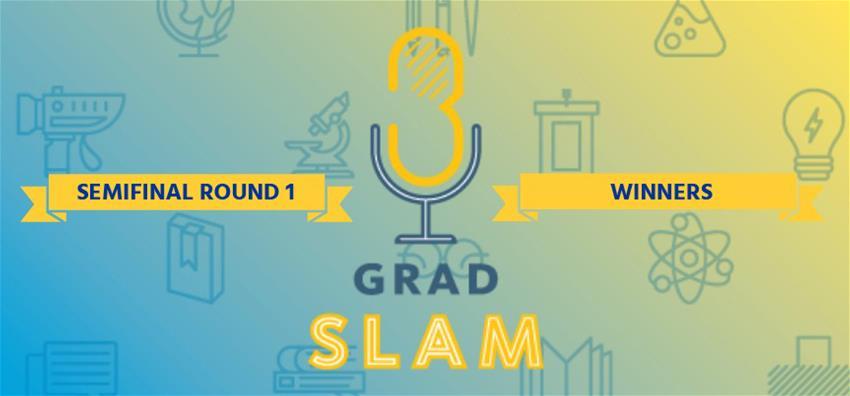
For those of you who missed out on the People's Choice round of the Grad Slam Semifinals, here's a list of who made bank (and will go on to win at least $750 in the Final Round on Friday) and who was the rest of the best.
Presenters Making Bank and Moving Up

Rest of the Best
- Best suit-and-tie ensemble: Abel Gustafson
- Best science fiction âtitle: Curt Nehrkorn (Mining for Dark Matter)
- Best use of an idiom: Ester Trujillo ("It's complicated")
- Best reason to wear comfortable shoes: Fang He
- Best advocate for recycling: Joseph Palazzo
- Best word/image pun: JV Decemvirale ("Me to We")
- Best title: Mallorie Chase (Paper Thronesâ and Unruly Urbanism in Modern Lisbon)
- Best modern gladiator photos: Sarah Neace
View photos and read synopses of all the talks fromâ Semifinal Round 1 below. You âmay find the full Grad Slam competition schedule here.
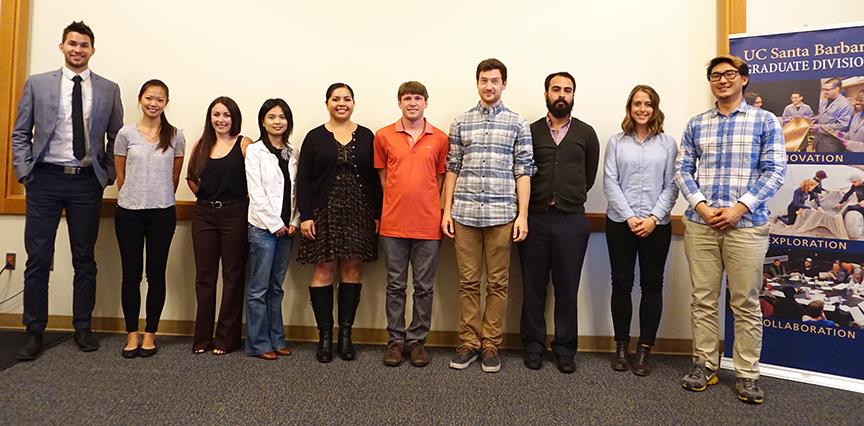
Semifinal Round 1
Monday, April 11 | 11 a.m. to noon
McCune Conference Room, HSSB 6020
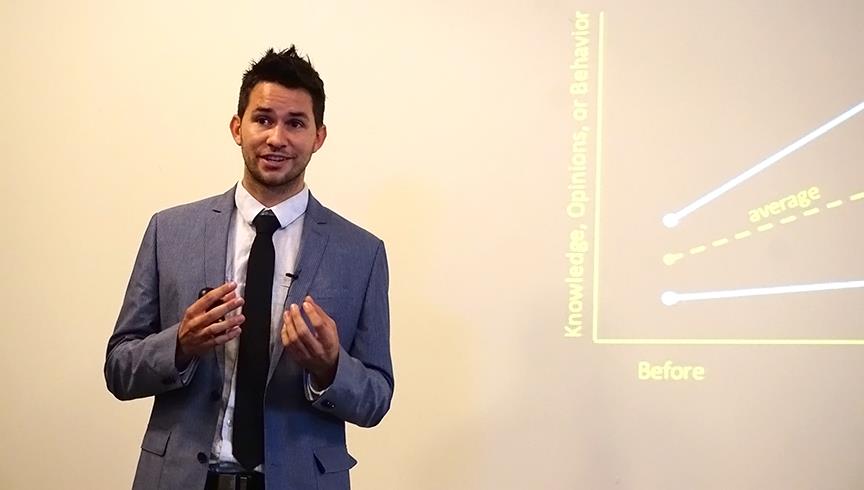 Abel Gustafson | Communication
Abel Gustafson | Communication
Good Intentions, Bad Effects: Cumulative Advantage in Science Communication
The communication of science to the public seeks to change knowledge, attitudes, and behaviors. However, these efforts often produce unintended, detrimental effects of cumulative advantage - where those who are in greatest need of knowledge, attitude, and behavior change are also those who benefit the least from the communication of the relevant information. In this talk, I describe this phenomenon and discuss possible ways to mitigate its harmful social effects.
 Curt Nehrkorn | Physics
Curt Nehrkorn | Physics
Mining for Dark Matter
Dark matter is the "missing" or "invisible" mass thought to constitute nearly 85% of the total matter in the universe. So far, the study of dark matter has been limited to the observation of its gravitational effects on galaxies and other astrophysical structures; however, there is good motivation for the hypothesis that dark matter does interact with "ordinary" matter, albeit very rarely. My presentation will focus on the work I've done with colleagues at UCSB and elsewhere to build and operate the LUX detector. The LUX detector is deployed almost a mile underground in a former gold mine in South Dakota, and holds the distinction of being the most sensitive dark matter detector in the world.
David Hwang | Materials
LEDs: Enablers of the Future
The major source of energy consumption in portable electronics is commonly the display. The current display technologies are liquid crystal displays (LCDs) and organic light-emitting diode (OLED) displays. Both are large sources of inefficiencies, and displays that are made purely of self-emissive inorganic light-emitting diodes (LEDs) can be at least twice as energy efficient. In my work, I am developing fabrication methods to create energy-efficient LED-based displays.
Ester Trujillo | Chicana & Chicano Studies
Understanding U.S. Salvadoran Ethnic Identity
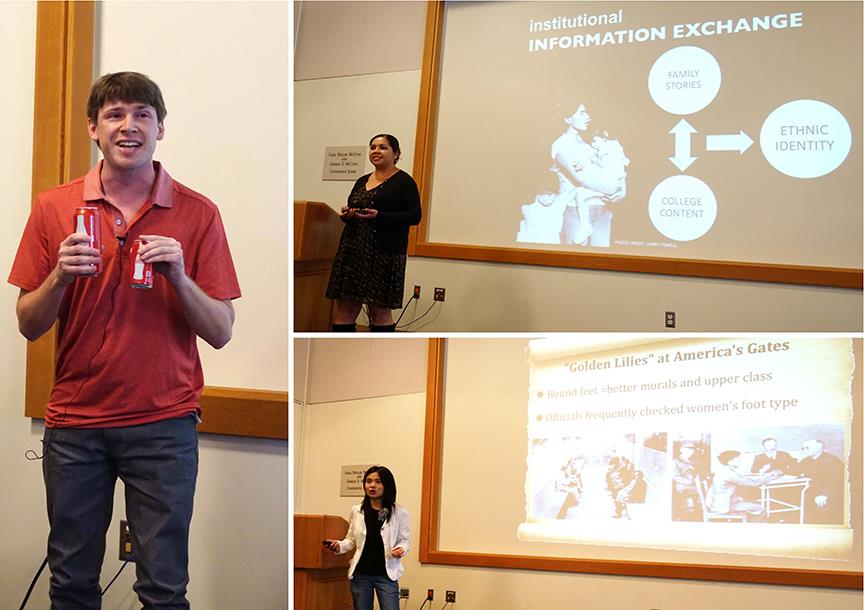 In 2014, the Salvadoran population surpassed Cubans to become the third largest Latina/o population in the U.S. The children of Salvadoran immigrants have come of age in the United States following their parents' migration out of war-torn El Salvador in the 1980s. Today, Salvadorans in Southern California define their ethnic experiences in contrast to those of the Mexican-descent Latina/o majority and they locate their affinity to Salvadoran culture through the privileges that their U.S. citizenship affords them.
In 2014, the Salvadoran population surpassed Cubans to become the third largest Latina/o population in the U.S. The children of Salvadoran immigrants have come of age in the United States following their parents' migration out of war-torn El Salvador in the 1980s. Today, Salvadorans in Southern California define their ethnic experiences in contrast to those of the Mexican-descent Latina/o majority and they locate their affinity to Salvadoran culture through the privileges that their U.S. citizenship affords them.
Fang He | History
'Golden Lilies' across the Pacific: American Imagination of Footbinding and the Shaping of Immigration Inspection
For the United States, the "otherness" of China appears most vividly in the custom of footbinding. Paradoxically, however, bound feet became a means to obtain exemption from American laws against Chinese immigration in the late nineteenth and early twentieth centuries. My presentation will explain what made inclusion of "the other" on this basis possible. It focuses on the transpacific world to explain how contexts on both sides of the Pacific enabled an invention of meanings of footbinding, and how these imaginations, perceptions, and stereotypes of bound feet affected American immigration officials' enforcement of Chinese exclusion laws.
Joseph Palazzo | Bren School of Environmental Science & Management
Waste Opportunities: The Real Reason to Recycle
The most profound environmental saving potential of recycling is its ability to offset the extraction and processing of raw materials, as opposed to the simple diversion of waste from landfills. I will show my research on the case of vehicle light-weighting using aluminum, where this misconception has a dramatic impact on the environmental outcome. Then, I will conclude that recycling is a massive opportunity that we cannot take for granted, and that going forward we have an obligation to figure out how to maximize the offset of raw materials from recycling.
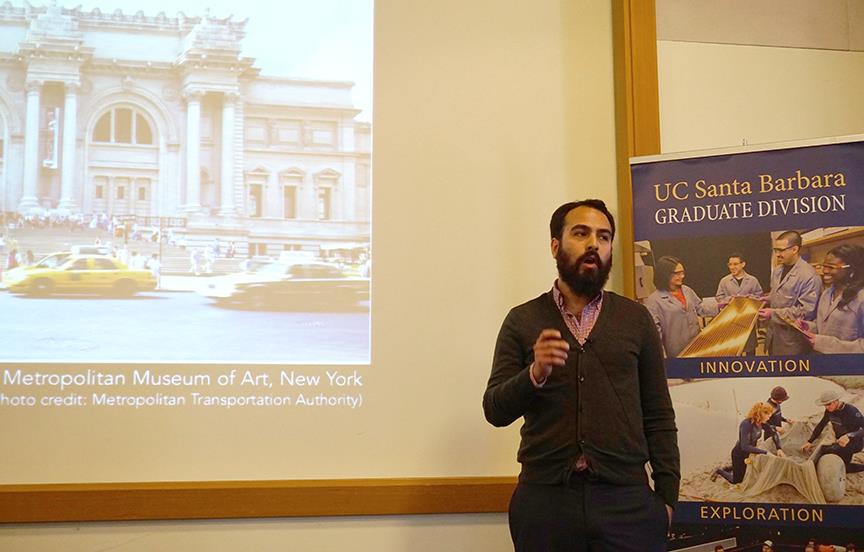 JV Decemvirale | History of Art & Architecture
JV Decemvirale | History of Art & Architecture
Knowing Your Place and Making Do: Radical Arts Organizing in Black and Latino Los Angeles, 1960 to Present
I will present on a constellation of art organizations founded and managed by people of color in Los Angeles from 1960 to the present. These organizations were founded and managed by a wide range of people: retired women city workers, artists of color, a nun, museum guards and art preparators. My presentation will focus on how these groups worked to create gathering spaces and the methods by which they formed their own artistic spaces and made communal spaces through art.
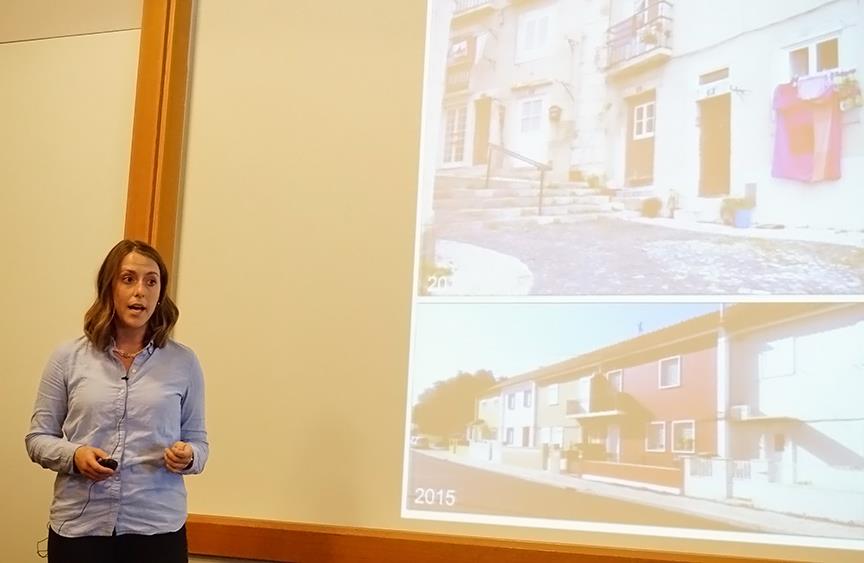 Mallorie Chase | History of Art & Architecture
Mallorie Chase | History of Art & Architecture
Paper Thronesâ and Unruly Urbanism in Modern Lisbon
Most architecture is created by people with zero political agency. However, historians need a new lens to interpret the built environment - one that focuses on occupation and decoration and upturns the notion that architecture is a monumental or aesthetic object created by a genius architect. If we focus on the way people adapt to challenges in space over time we can better describe human histories, because social relations are also always spatial relations. I study the complicated urban context of Lisbon, Portugal, in the 20th century, where paper thrones to Saint Anthony and tin shanty dwellings together show that architecture is always a political gesture.
Nicole Leung | Biomolecular Science & Engineering
Lighting the Path from the Eye to the Brain
Our eyes serve two functions: to see and to reset our biological clocks. I will share some insight into how light is received by our eyes and more importantly, how light information is converted into a language that our brains can understand. I will discuss my work in the Craig Montell lab, using the fruit fly as a model organism to study the path of light from the eye to the brain. I will highlight the importance of basic research and the use of model organisms to advance knowledge about humans.
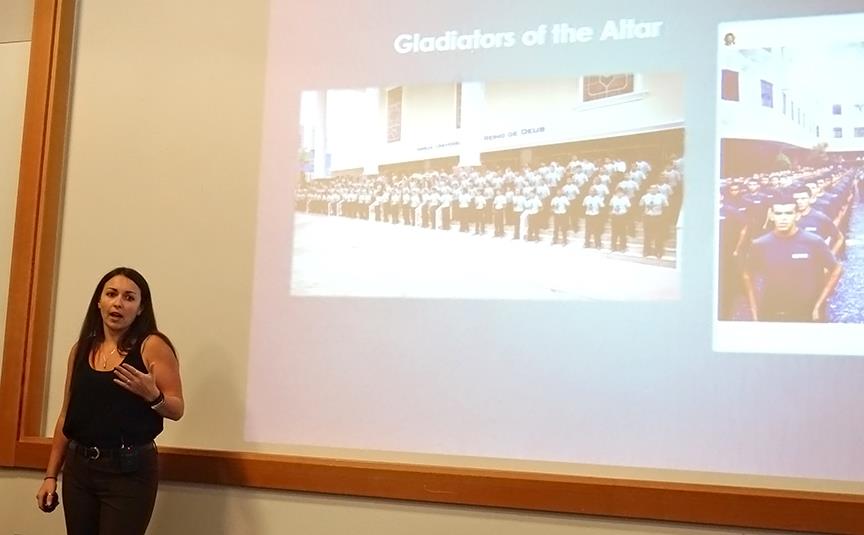 Sarah Neace | Global Studies
Sarah Neace | Global Studies
Religious Violence in Brazil: The Rise of Militant Pentecostalism and Implications for Afro-Brazilian Religions
Pentecostalism is growing rapidly around the globe and especially in Brazil. Extremist groups of Pentecostals, and large neo-Pentecostal churches in particular, are spreading hate and physical violence against Afro-Brazilian religions, vulnerable minority religions derived from African traditions. In seeking to understand how this is happening, I have discovered that some groups of Pentecostals are militarizing in some ways, including promoting a narrative of cosmic war that poses African traditions as the enemy. Finally, I will discuss the ways in which Pentecostal groups are claiming that they are the true victims of persecution because they feel it is their true religious freedom to discriminate and they should not be discriminated against for doing so.